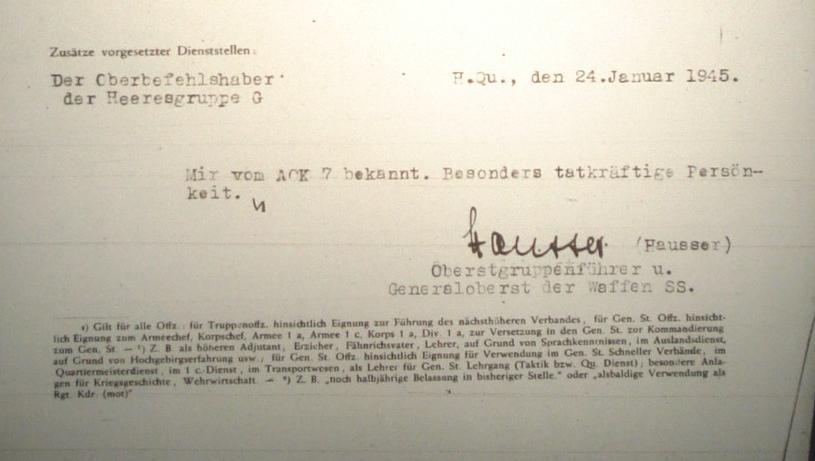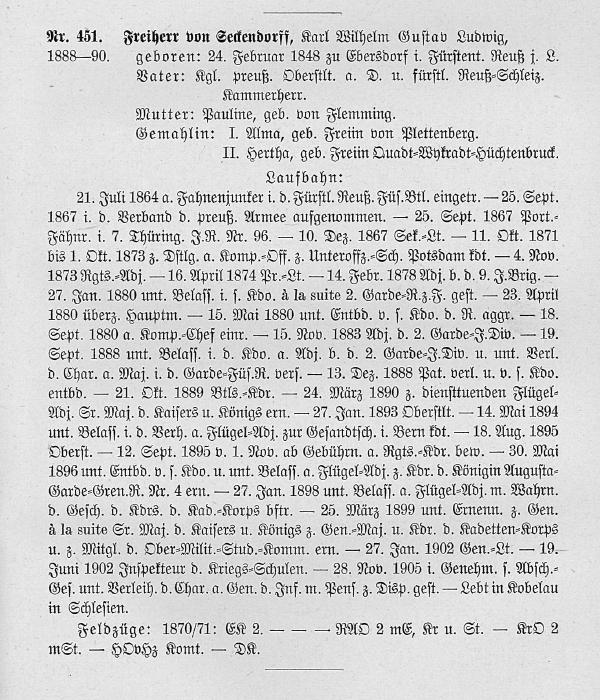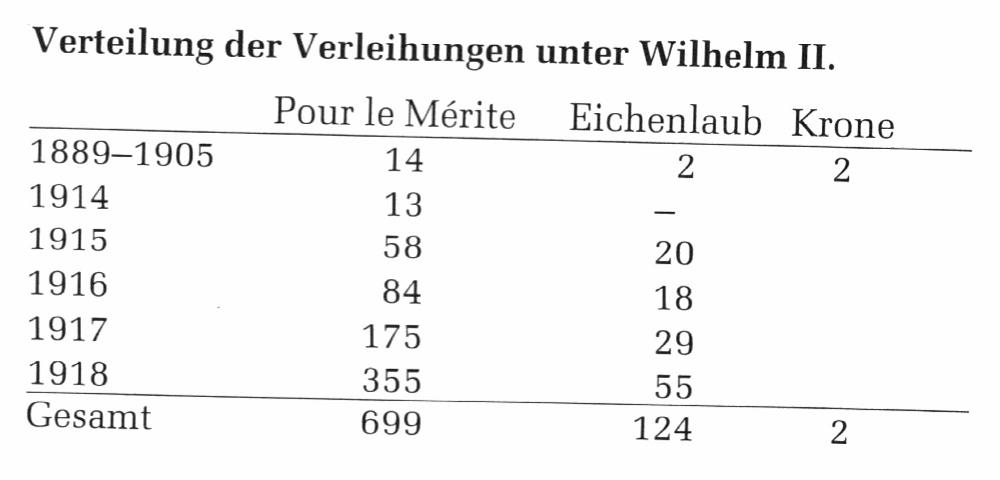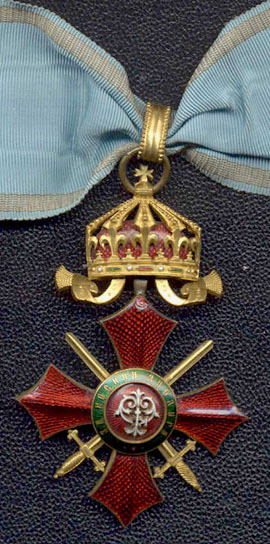-
Posts
4,908 -
Joined
-
Last visited
-
Days Won
97
Content Type
Profiles
Forums
Blogs
Gallery
Events
Store
Everything posted by Dave Danner
-

Waffen SS Hausser, Paul
Dave Danner replied to hucks216's topic in Germany: All Eras: Signature Database
-
I did not know there were receipts for the Hausorden. I've only seen the receipts for the LKEK and about one-third of the LK awards. I should be in Detmold again this summer, but I am not sure when. There seem to have been a number of post-war awards by the former ruling house, many of which were then backdated, usually to 5.11.1918 (one week before the abdication) or 12.11.1918, or some point in between. I have no idea why they messed up the "mit" and "ohne" Schwertern entries. Another odd example: Hptm. Oskar Karkowski received the LK on 5.11.1918, and his receipt was dated the same day. He is not in the LDH rolls, but in his Wehrmacht personnel file, he has the LDH4aX (also dated 5.11.1918) and the LDHOX (dated 12.11.1918). These appear to have been backdated awards from the former ruling house, but I have no idea when they were actually awarded.
-
That Kriegsrangliste-Auszug is not Anton/Antonius, but Friedrich. The Vornamen are also wrong. Friedrich Graf von Korff gen. Schmising-Kerssenbrock was Friedrich Alfred Hermann Maria Hubertus, *10.4.1894 in Klanzig, gef. 3.9.1917 bei Muncelul, Rumänien. He was a Bavarian officer in the Infanterie-Leib-Regiment. The Antonius whom Rick identified is the only Graf Korff gen. Schmising-Kerssenbrock with "Antonius" or "Anton" as a Rufname listed in the Gothaisches Genealogisches Handbuch der Gräflichen Häuser. Almost all of them also use the Latin versions of their names, by the way. His full name was Emanuel Maria Margareta Antonius Augustinus Thomas Bonifacius Fridericus Gabriel Bapt. Majella Hubertus Walpurgis Johannes Petrus u. Paulus Graf Korff gen. Schmising-Kerssenbrock, *30.6.1895 in Brincke. His brother Joseph was Emanuel Maria Joseph Walpurgis Klemens August Friedrich Leopold Dominikus Antonius Johannes Heinrich Rembert Hubertus Gerard Georg Ignatius Karl Graf Korff gen. Schmising-Kerssenbrock, *14.8.1886 in Brincke. Günther, the Fähnrich in the Garde-Jäger-Bataillon, was a second cousin (their grandfathers were brothers). The older brother Ferdinand referred to in the excerpt was an Oberleutnant in the Garde-Kürassier-Regiment, killed on 25.10.1918.
-
The Feldschnalle is: • Königlich Preußischer Kronenorden, 4.Klasse (21.1.1912) • Fürstlich Lippischer Hausorden, Ehrenkreuz 4. Klasse, 1. Abteilung (11.6.1913) • Kaiser Wilhelm-Gedächtnismedaille (22.3.1897) • Herzoglich Sachsen-Ernestinischer Hausorden, Ritterkreuz 2. Klasse (18.8.1911) • Fürstlich Schaumburg-Lippischer Hausorden, Ehrenkreuz 4. Klasse (20.2.1912) • Großherzoglich Mecklenburgischer Greifen-Orden, Ritterkreuz (25.7.1910) • Königlich Sächsischer Albrechtorden, Ritterkreuz 1. Klasse (27.12.1913) • Herzoglich Braunschweigischer Hausorden Heinrich des Löwen, Ritterkreuz 2. Klasse (15.3.1913) In addition, he also received: • Eisernes Kreuz 2. Klasse • Johanniterorden, Ehrenritter • Großherzoglich Hessisches Allgemeines Ehrenzeichen "Für Tapferkeit" (15.2.1915) • Fürstlich Lippisches Kriegsverdienstkreuz (25.3.1915/28.3.1915) • Herzoglich Sachsen-Ernestinischer Hausorden, Ritterkreuz 1. Klasse mit Schwertern (17.12.1915) I assume he also received the EK1, but that would have been after his 1915 Lippe Kriegsverdienstkreuz (LK) receipt, where he listed his awards. Roman also mentioned the swords award of the Lippischer Hausorden. The difference in dates for the Lippe and Schaumburg-Lippe awards from what Roman provided above are probably the difference between the official award date and the date he actually received them. The dates I have above are those which he provided himself in his receipt for his LK. The dates for that cross which I have above are the award and receipt dates. His MG3 is dated 11.6.1910 in the Mecklenburg rolls, so that is probably another example of award date vs. receipt date. Regards, Dave
-
That's Heinz. I was going through my references and notes to see if I could figure out where the information I had on him came from, and it turns out it was me. I had found him in an edition of the Deutsches Geschlechterbuch among several other members of the Körner family. Körner, Heinz Wilhelm, *31.12.1882 in Militsch in Schlesien; 21.2.03 als Fahnenjunker in das FAR 52 eingetreten, 16.8.04 Lt., 18.8.12 OLt., 1916 Hptm., Fhr. FA A 201, Maj.a.D. No other awards were listed in his DGB entry.
-
The roll is for all awards of the Order, as well as the Order of Berthold I and House Order of Loyalty, including swords and non-swords awards. I have copies of pages 224 to 550, running from 30 October 1913 to the end of the war and the Grand Duchy in November 1918. It is not organized by class; rather, all classes are in chronological order. There are lines for 30 entries per page, so that means some 9800 awards of all classes on these pages. World War I awards with swords begin on page 240. I suppose I could simply start counting from there, but it is simply a slow, time-consuming process for little reward. I considered doing an update to Roth's book, but I do not think there is enough interest to justify the publishing costs *. Rick and Daniel barely broke even on the previous series of books. Right now, my priorities are Schwarzburg, which is completed and awaiting formatting/publication, Anhalt, which is mostly done, and Schaumburg-Lippe, which is also mostly done. There is also another problem with the roll, which might partly explain the difference between Volle's and Roth's numbers, and also while starting in August 1914 and counting awards won't work. Note the following entry for Hermann Clemm. As a Fabrikant in Gernsbach, he received the BZ3bE on 2.7.1914. As a Rittmeister d.L., he received the BZ3bXE on 16.8.1915. The clerk who maintained the roll entered the swords award here on the same page as the earlier non-swords award, rather than under the other 16.8.1915 awards. This happened in a number of cases, though apparently not most of them, where a holder of a peacetime class received a wartime class. This also happened in a number of cases where someone simply received a higher class or classes over the course of his life. So if you are looking for a specific award such as Clemm's BZ3bXE and you know the date of award, you will find that it is not on the page(s) with awards from that date. And that also means you'd have to go back through many of the earlier pages to find all of the other wartime awards listed with the recipient's peacetime award(s). When it was gazetted in the Staatsanzeiger, Clemm's swords award was included with other awards made on the same day, so it was included in Roth's book with the right date. I suspect Roth's 1479 number was correct as far as it went, getting all of the awards officially published and missing only the late war awards, bringing the total to 1529, while Volle's higher 1504 number might be because he supplemented his number with information from other sources. Several of the "missing" late-war recipients were later Reichswehr and Wehrmacht officers, for example, so their awards showed up in later sources or photos. But as I noted above, I cannot say for certain without going through the entire roll all the way back to the 1800s. * PS: I do think there is some value in updating Roth's book. For wartime security reasons, the actual unit was often not listed in the Staatsanzeiger, so Roth's book has numerous entries such as "Leutnant d.R. (Fliegerabteilung)". The actual roll, however, includes the full unit designation. Also, as with my other works, I seek to include additional information where available such as dates of birth/death and civilian occupations. I have been trying to make these books more than just lists of awards and names, but to the extent possible memorials to the men who earned them. PPS: I did compile the list of those "missing" 1918 awards. It was supposed to be published by the Deutsche Gesellschaft für Ordenskunde as a supplement to the Roth book - I believe as a PDF or maybe in their magazine? - but I am not sure of the status.
-
These are two different people. The FAR 52 officer was Heinz Wilhelm Körner. The Hptm. Körner above who died on 23.1.1917 was Wilhelm Rudolf Martin, *4.11.1885 in Oranienbaum, Anhalt, †23.1.1917 as Führer Flieger-Abteilung A 269. He was from Pionier-Bataillon Nr. 15. Martin's brother, Helmut, was also a PB 15 officer, although he spelled his name as Koerner. Helmut was an Oberst in World War II. Their father was Sanitätsrat Dr. Franz Körner in Oranienbaum.
-
Yeah, even if we had all the Saxon ÖM3K recipients, there is probably not enough to narrow it down enough for a positive ID. Alive in 1938 and some sort of civil servant. No KVK2X or other World War II awards, so maybe not a reserve officer, although I don't know what the criteria were for the Sudetenland Medal for civilians or civil servants.
-
The exact number is unknown, though we have a fairly good estimate. For World War I, Volle has 1504 and Roth has 1479 awards. Roth's list was missing a few late war awards which were not gazetted in the Staatsanzeiger. Since I have the actual roll and not just the Staatsanzeiger, I have added 50 more late-war awards not in Roth, which would be 1529 in total. However, I cannot be certain if Roth's 1479 was correct (some awards might have been mis-listed), so maybe the actual number is somewhere between Volle's 1504 and Roth/Danner's 1529. Very nice medal bar, by the way.
-
Medal bar: • Eisernes Kreuz 2.Klasse • Roter-Adlerorden 4.Klasse • Kronenorden 3.Klasse • Rote-Kreuz-Medaille 2.Klasse • Dienstauszeichnungskreuz • Rote-Kreuz-Medaille 3.Klasse • Südwestafrika-Denkmünze in Stahl • Kaiser-Wilhelm-Gedächtnismedaille (Centenarmedaille) • Herzoglich Anhaltisches Friedrichkreuz am grün-weißen Bande • Königlich Bayerischer Militär-Verdienstorden 3.Klasse mit Schwertern am Bande für Kriegsverdienst • Großherzoglich Badischer Orden vom Zähringer Löwen, Ritterkreuz 1.Klasse • Herzoglich Braunschweigischer Orden Heinrichs des Löwen, Ritterkreuz 2.Klasse • Herzoglich Sachsen-Ernestinischer Hausorden, Ritterkreuz 1.Klasse mit Jahreszahl 1914 I agree that the last ribbon on the ribbon bar is probably Bulgarian, based on the crown. "MBO" is the Military Bravery Order (Voenen Orden "Za Hrabrost").
-
Karl Adolf Eckert (1798-1865) was ennobled as "Eckert gen. von Roques-Maumont" on 22 August 1926, taking his wife's name (Charlotte de Roques-Maumont) as part of his own. They were not directly related to the branch of Roques-Maumont which settled in Hannover. Adolf's oldest son died as a child. His second son, Xaver Emil Louis Friedrich (1833-1882) was a Prussian Oberstleutnant. His youngest son, Arthur Friedrich August (1835-1902) was a Prussian Hauptmann. Arthur had three sons: Eckert gen. v. Roques-Maumont, Arthur Friedrich Wilhelm v., *9.10.1868 in Sigmaringen Roques-Maumont, Roderich v., *11.7.1885 in Sigmaringen Roques-Maumont, Alfons v., *9.2.1891 in München Only Arthur went by the full name, and as Glenn noted above, not for his entire career. Roderich and Alfons were Arthur's half-brothers. Roderich was a Kunstgewerbelehrerziechner in München and served as a Pionier in the Bavarian Army. Alfons was an Opernsänger in München and served as a Militär-Krankenträger in the Bavarian Army.
-

Freiwilligen Bataillon Nr. 26
Dave Danner replied to dante's topic in Germany: Weimar Republic & Deutsche Freikorps
-
Otto v. Schultzendorff was the regimental adjutant of 4.GFAR in the 1914 rank list. It seems possible he would have moved up to 2.Garde-Feldartillerie-Brigade at some point during the war. The later Generalleutnant Georg v. Prondzynski was the regimental adjutant of 2.GFAR before the war, but was a Batterie-Führer in August 1914. I don't know who replaced him in 1914, though I would expect the regimental history would say.
-
Walter Gustav Arnold Luyken, * 6.4.1885 in Coblenz, † 27.7.1973 in Heinsen, was Ernst's younger brother. He was an Einjährig-Freiwilliger in 2.GFAR at the time the picture was taken. He spent the entire war with 2.GFAR, including two years as regimental adjutant, and received the HOH3X. Regarding the ranks in the photo, the black ink was probably from when the photo was taken, while the blue ink updated the information a few years' later, since it includes Bonin's promotion and Busse's and Studnitz's transfers.
-
Bonin is Swantus Ernst Robert Bruno, * 5.7.1878 in Halle a.S., † 8.4.1946 in Berlin. After a short time in the Landwehr, he returned to active duty, first as a reserve officer of 2.GFAR attached to the active regiment. In March 1913 he was reactivated as an Oberleutnant with a Patent of 21.2.11, and in September was transferred to the 4.GFAR. He was promoted to Hauptmann on 8.10.14, and retired after World War I as a Major. Ernst Anton Edmund Luyken, * 5.7.1879 in Düsseldorf, † 26.3.1967 in Wiesbaden, was a Staatsanwalt in Saarbrücken. He was mobilized on 12 August 1914 and served the entire war, rising to Hauptmann der Reserve in February 1918. He was released from active duty on 26 November 1918. He was recalled in World War II as a Major der Reserve. Johann Carl Otto Waldschmidt, * 22.6.1870 in Wetzlar, † 1.7.1956 in Wetzlar, was a Regierungsbaumeister and later Kreisbaurat. He served as a Hauptmann der Reserve in World War I. Wilhelm v. Busse, * 30.1.1885 in Ossen, † 27.8.1967 in Berlin, was, as noted on the photo, transferred to Kürassier-Regiment Nr. 6. He served in that regiment in World War I as well as in various staff and general staff positions, retiring as a Major. All four received the Iron Cross 1st Class, among other decorations.








